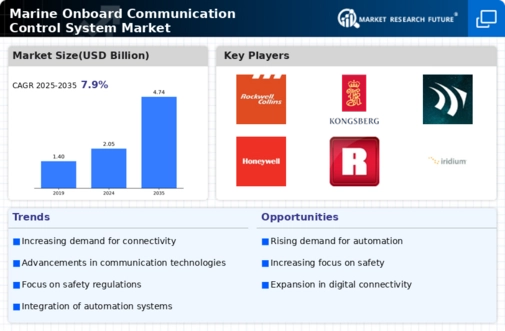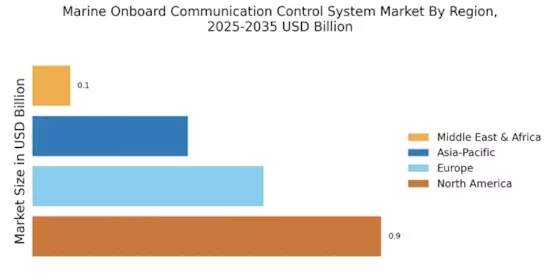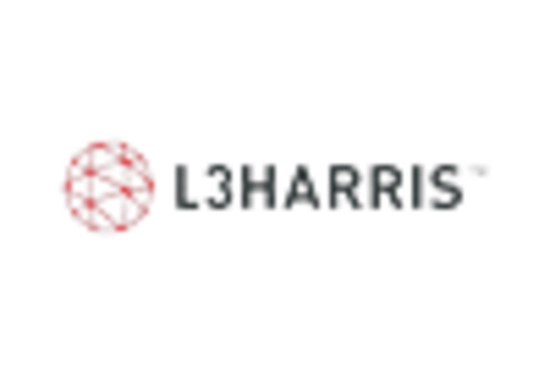Growing Emphasis on Cybersecurity Measures
The Marine Onboard Communication Control System Market is increasingly impacted by the growing emphasis on cybersecurity measures. As maritime operations become more digitized, the risk of cyber threats has escalated, prompting companies to invest in robust cybersecurity solutions. Effective communication systems are essential for safeguarding sensitive data and ensuring the integrity of onboard operations. The market is witnessing a shift towards systems that incorporate advanced cybersecurity features, which is likely to drive growth in this sector. Analysts project that the demand for secure communication systems could lead to a market expansion of around 5% annually. This trend highlights the critical need for cybersecurity in maintaining the safety and reliability of maritime communication.
Regulatory Compliance and Safety Standards
The Marine Onboard Communication Control System Market is significantly influenced by stringent regulatory compliance and safety standards imposed by maritime authorities. Organizations such as the International Maritime Organization (IMO) have established guidelines that mandate the implementation of effective communication systems onboard vessels. Compliance with these regulations not only ensures the safety of crew and cargo but also enhances operational efficiency. As a result, companies are increasingly investing in advanced communication systems to meet these regulatory requirements. The market is expected to witness a surge in demand for systems that comply with these standards, potentially leading to a market growth rate of around 7% annually. This trend underscores the importance of regulatory frameworks in shaping the future of onboard communication systems.
Expansion of Maritime Trade and Transportation
The Marine Onboard Communication Control System Market is poised for growth due to the expansion of maritime trade and transportation. As global trade continues to increase, the demand for efficient and reliable communication systems onboard vessels is becoming more pronounced. Enhanced communication capabilities are essential for managing logistics, ensuring timely deliveries, and maintaining safety standards. The market is expected to benefit from this trend, with projections indicating a growth rate of approximately 7% over the next few years. This expansion is likely to drive investments in advanced communication technologies, as shipping companies seek to enhance their operational capabilities and meet the demands of a rapidly evolving maritime landscape.
Rising Demand for Enhanced Operational Efficiency
The Marine Onboard Communication Control System Market is driven by the rising demand for enhanced operational efficiency among shipping companies. As the maritime industry becomes more competitive, companies are seeking ways to optimize their operations and reduce costs. Effective communication systems play a pivotal role in achieving these objectives by facilitating better coordination among crew members and improving decision-making processes. The integration of real-time data analytics and communication tools allows for more efficient resource management and operational planning. This trend is likely to propel the market forward, with estimates suggesting a growth rate of approximately 6% over the next few years. The focus on operational efficiency is expected to lead to increased investments in advanced communication technologies.
Integration of Advanced Communication Technologies
The Marine Onboard Communication Control System Market is experiencing a notable shift towards the integration of advanced communication technologies. Innovations such as satellite communication, 5G networks, and IoT devices are enhancing the efficiency and reliability of onboard communication systems. These technologies facilitate real-time data exchange, which is crucial for navigation, safety, and operational efficiency. As a result, the market is projected to grow at a compound annual growth rate (CAGR) of approximately 8% over the next five years. This growth is driven by the increasing need for seamless communication in maritime operations, which is essential for both commercial and military vessels. The adoption of these advanced technologies is likely to redefine operational protocols, thereby enhancing overall maritime safety and efficiency.


















Leave a Comment